Free Shipping on orders over $50
The Enchanting World of Fairies
Discovering the Different Types of Fairies
10/1/20245 min read
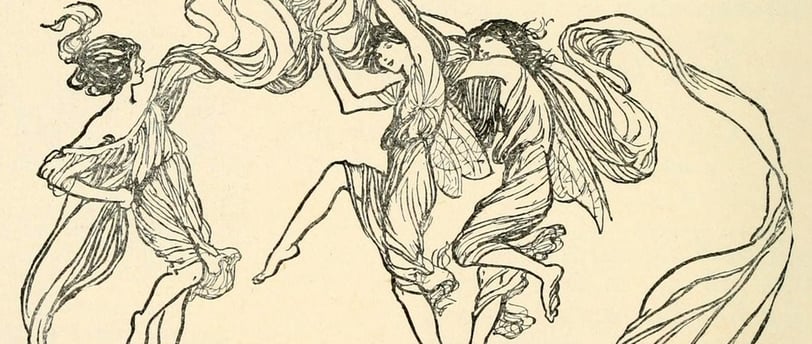

Fairies have always captivated human imagination, weaving their way through myth, folklore, and literature for centuries. From delicate woodland sprites to mischievous household tricksters, these magical beings come in a wide variety of forms, each with its own distinct personality and purpose. Let’s delve into the different types of fairies found in legends and explore what makes each one unique.
Claude A. Shepperson (1867–1921), Public domain, via Wikimedia Commons
1. Pixies
One of the most recognizable types of fairies, pixies are known for their playful and mischievous nature. Hailing from the folklore of Cornwall, England, these small, winged beings are often depicted with pointy ears, sprightly faces, and a love for dancing and causing harmless trouble. Pixies are said to live in meadows and forests, delighting in leading travelers astray by confusing them with their magic.
Common Traits:
Playful and mischievous
Typically friendly but enjoy pranks
Found in forests and gardens
Love to dance in rings, which we call "fairy circles"
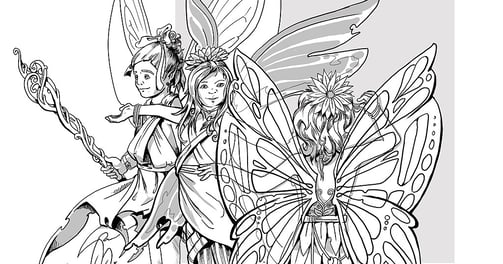

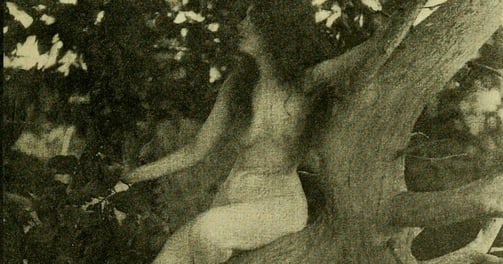

2. Dryads (Tree Fairies)
Dryads are nature spirits deeply connected to trees, particularly oak trees, and are often seen as guardians of the forest. They originate from Greek mythology and are sometimes portrayed as beautiful women who reside within the trees they protect. Dryads are shy and rarely interact with humans unless provoked or called upon for help. Their lives are tied to the trees they inhabit, and if the tree dies, so does the dryad.
Common Traits:
Tree guardians, typically associated with oaks
Shy and protective
Harmonious relationship with nature
Can be benevolent or wrathful if their homes are threatened
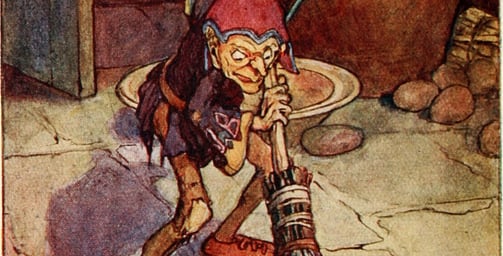

3. Brownies
Brownies are domestic fairies that take a keen interest in human households. Originating from Scottish and English folklore, these helpful creatures perform household tasks, such as cleaning and tidying, in exchange for small offerings of food (usually milk or honey). However, brownies are very particular—they dislike being seen and will abandon a house if mistreated or if their offerings are forgotten.
Common Traits:
Helpful and hardworking
Secretive; they dislike being acknowledged directly
Can become pranksters if angered
Enjoy simple gifts like bread or milk
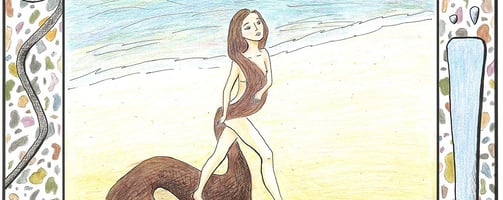

4. Selkies
While not traditionally thought of as fairies, selkies are magical shapeshifters from Scottish and Irish folklore who can transform from seals into humans by shedding their skins. They are often depicted as melancholy and romantic figures, yearning for the sea when they live on land. Selkies are primarily found in coastal stories and have been linked to the realm of fae due to their magical abilities and otherworldly connections.
Common Traits:
Shapeshift between seal and human forms
Often portrayed as gentle and kind
Tied to the sea, with many tales involving longing and love
Can be tragic figures when forced to live away from the ocean
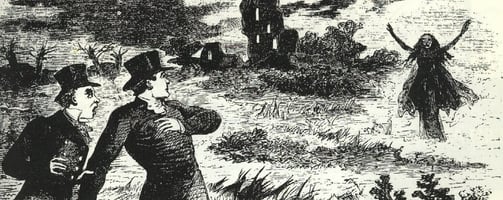

5. Banshees
Banshees are one of the more ominous types of fairies, known primarily in Irish folklore as harbingers of death. These ethereal beings are often depicted as women dressed in white or grey, with long, flowing hair. Their mournful wails are said to foretell the death of a family member. Though banshees are not malevolent, their appearance is considered a dire omen.
Common Traits:
Wailing signals an impending death
Often associated with specific families or bloodlines
Appear as women in mourning attire
Can be considered protective but foreboding
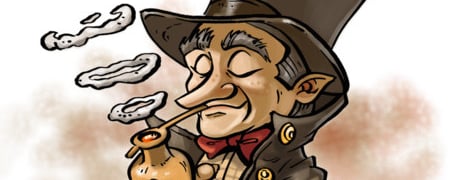

6. Leprechauns
Perhaps one of the most famous fairies in Irish folklore, leprechauns are small, solitary creatures known for their love of mischief, gold, and craftsmanship—especially making shoes. Leprechauns are famously elusive, guarding pots of gold at the end of rainbows, and are said to grant three wishes if captured. However, outwitting them is no easy task.
Common Traits:
Fond of gold and treasure
Quick-witted and tricky
Shoemakers by trade
Often hide their wealth in secret locations
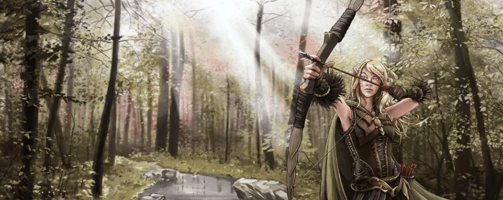

7. Elves
Elves are often depicted as tall, graceful beings with immense magical power. They appear in numerous cultural mythologies, including Norse and Germanic folklore. Unlike other types of fairies, elves are sometimes seen as more regal or noble, living in realms separate from humans. They are often associated with nature and possess great beauty, but they can be either helpful or dangerous depending on how they are approached.
Common Traits:
Regal and noble, often linked with royalty
Strong connection to nature and magic
Can be protective or vengeful
Often depicted as living in their own realms, such as Alfheim
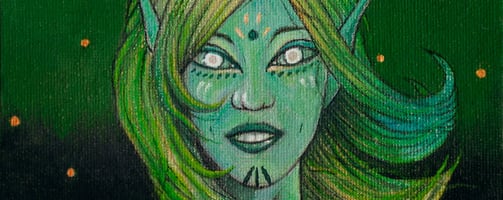

8. Tylwyth Teg (Welsh Fairies)
Tylwyth Teg, meaning “Fair Folk,” are the fairy folk of Welsh mythology. These fairies are known for their beauty and tendency to both help and hinder humans depending on their mood. They live in a parallel world and often interact with humans during their travels. They have been linked to changelings—fairy children left in place of human babies.
Common Traits:
Beautiful and enchanting
Can be either benevolent or tricksters
Closely linked to the otherworldly realms
Love music, dance, and celebrations
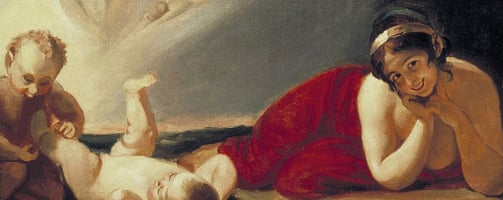

9. Changelings
Changelings are a special kind of fairy, though more closely associated with dark folklore. These fairies are often swapped with human babies, taking the child’s place in secret. The changeling appears sickly and frail while the stolen child is believed to be raised in the fairy realm. The reasons behind these swaps vary, but changelings are generally viewed with fear and suspicion.
Common Traits:
Appear as human children but have fae traits
Tied to the concept of fairy abductions
Often described as sickly or behaving strangely
Closely associated with dark fairy magic
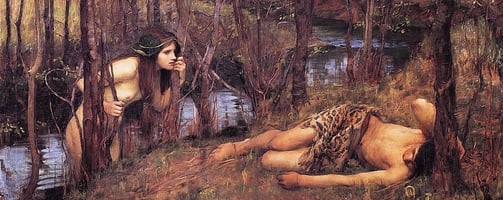

10. Water Nymphs
Water nymphs, or naiads, are fairies closely linked to bodies of water like lakes, rivers, and streams. They are often depicted as beautiful maidens who protect the waters they inhabit. Nymphs can be benevolent, blessing those who respect the water, but they may also become dangerous if their domain is polluted or harmed.
Common Traits:
Tied to water bodies
Can be gentle or wrathful depending on the care of their environment
Often depicted as beautiful and alluring
Associated with both healing and drowning legends
Conclusion
Fairies come in all shapes and sizes, with different powers, personalities, and connections to the natural world. Whether they are kind or mischievous, fairies remain an enduring part of folklore and imagination, offering us glimpses of a world that exists just beyond the edge of our everyday reality. By understanding the diverse types of fairies, we can better appreciate the richness and complexity of these magical beings, as well as their influence on cultures across the globe.
Which fairy folklore resonates most with you?
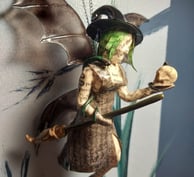

Like Fairies?
Check out my handmade fairies
